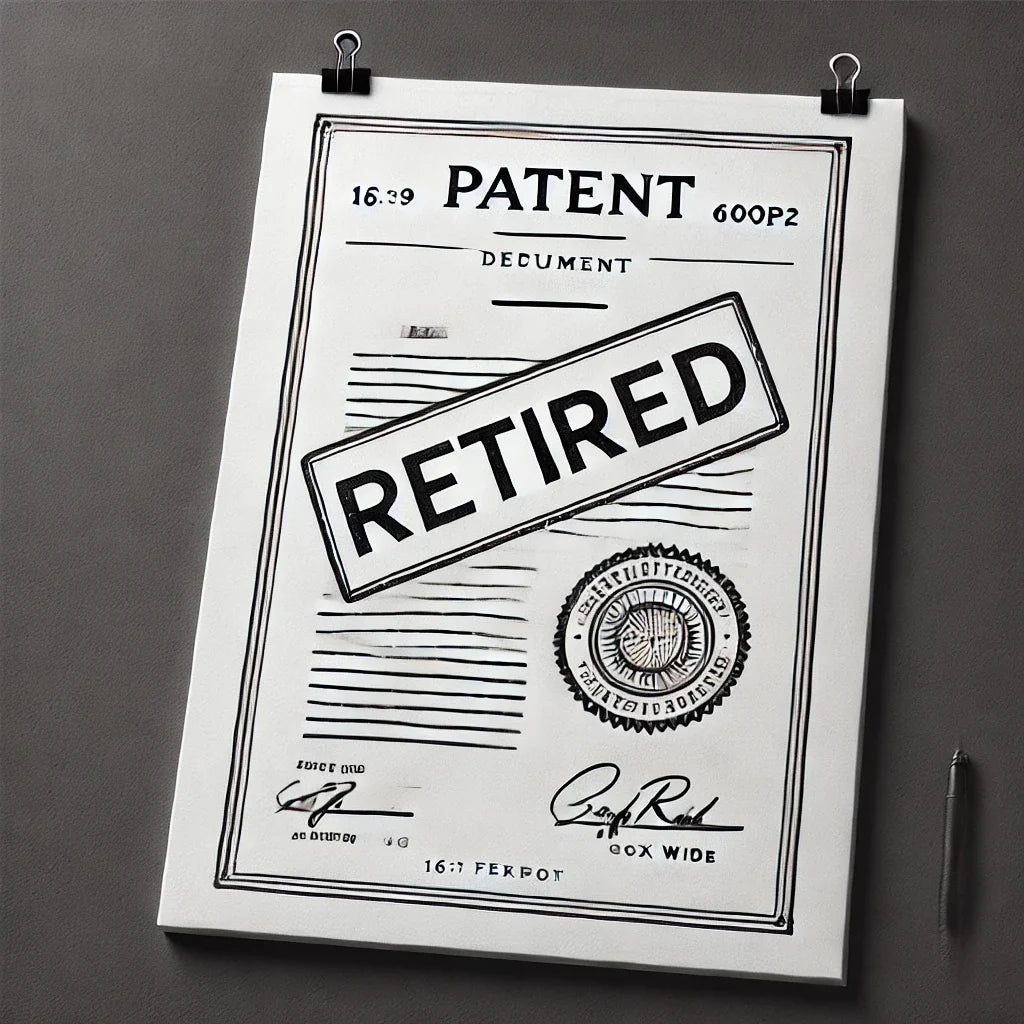🖊️ Quick Summary: Even when patents expire or are abandoned, they still pack a punch. These non-enforceable patents may have retired from active duty, but they can still be cited as prior art against your shiny new application. Know the rules, dodge the ghosts!
❓ Common Questions & Answers:
Q1: What does it mean when a patent is abandoned? A1: An abandoned patent is one where the owner stopped pursuing it or missed key deadlines, making it non-enforceable.
Q2: What causes a patent to expire? A2: Patents expire when their term ends (usually 20 years) or when maintenance fees aren't paid, ending their enforceability.
Q3: Can an expired or abandoned patent be revived? A3: Sometimes abandoned patents can be revived if certain USPTO requirements are met, but expired patents typically stay expired.
Q4: Can examiners still use expired patents against new applications? A4: Absolutely! They can cite abandoned or expired patents as prior art to reject new patent applications.
Q5: Why should inventors care about dead patents? A5: Because even if they're not enforceable anymore, they can block or complicate your patent journey.

📜 Step-by-Step Guide:
Step 1: Understand patent life cycles: active, abandoned, expired.
Step 2: Learn what actions cause abandonment (missed deadlines, lack of responses).
Step 3: Identify maintenance fee schedules to avoid accidental expiration.
Step 4: Search prior art thoroughly, including abandoned and expired patents.
Step 5: Consult with a patent attorney if your application hits a "ghost" prior art wall.
📖 Historical Context:
The U.S. patent system dates back to 1790, designed to spur innovation while eventually returning ideas to the public domain. Initially, patents lasted just 14 years, with no maintenance fees! Fast forward to the 20th century, and maintenance fees plus term limits (generally 20 years) became the norm, ensuring only commercially valuable inventions stayed protected.
The concept of abandoned patents came later as inventors either intentionally or accidentally forfeited their rights. This opened pathways for others to innovate without fear of infringement. Yet, even dead patents hold historical value: they shape how new inventions are judged today.
Over time, courts and the USPTO clarified that expired or abandoned patents, despite losing enforceability, remain potent prior art tools. They still set the "bar" against which novelty and non-obviousness are measured for new inventions.
🏢 Business Competition Examples:
1. Kodak: Lost several patents through expiration, which competitors used to launch digital camera innovations.
2. Blackberry: Several abandoned patents allowed smartphone competitors to tweak designs without facing lawsuits.
3. Tesla (early patents): Elon Musk’s public patent pledge made some patents non-enforceable, encouraging industry growth but still serving as prior art.
4. Nokia: Expired patents enabled competitors to refine and create new telecommunications technology standards.

💬 Discussion Section:
At first glance, an abandoned or expired patent seems about as threatening as a retired mall cop. No enforceability means no lawsuits, right? Technically yes — but practically, that's only part of the story.
In reality, the USPTO examiner’s toolkit treats abandoned and expired patents like seasoned referees. They might not play the game, but boy, can they still call fouls. When you apply for a new patent, these "retired" patents can jump out of the archives, cited as prior art to show that your invention isn't quite as novel as you thought.
Why? Because "novelty" and "non-obviousness" are judged by what existed publicly before your filing date. It doesn’t matter if the earlier work is enforceable — its mere existence is enough. Dead patents reveal what was previously known, acting as powerful shields to preserve the public domain.
For inventors and businesses, this means you need to treat abandoned and expired patents with the same respect (and fear) you reserve for active patents during your prior art searches. It's also why comprehensive searches, freedom-to-operate opinions, and understanding revival risks are vital parts of a successful patent strategy.
No one wants their patent dreams dashed by a zombie patent.
⚖️ The Debate:
Side 1: Expired and Abandoned Patents Should Be Citable They uphold the integrity of the public domain, prevent re-patenting old ideas, and keep the innovation pipeline honest.
Side 2: They Shouldn't Be Citable Some argue they create unnecessary hurdles, discouraging new inventions and bogging down the patent process with irrelevant or outdated prior art.

✅ Key Takeaways:
-
Expired and abandoned patents are non-enforceable but still very much alive as prior art.
-
USPTO examiners frequently cite "dead" patents against new applications.
-
Revival is possible for some abandoned patents, but rare.
-
Smart inventors include dead patents in their prior art research.
-
Ignoring them could sink your application.
⚠️ Potential Business Hazards:
-
Failing to conduct a full prior art search, including dead patents.
-
Overlooking revival risks for abandoned patents.
-
Assuming expired patents are irrelevant during patent prosecution.
-
Spending resources on inventions already disclosed by dead patents.
❌ Myths & Misconceptions:
-
"Expired patents are totally irrelevant." (Nope.)
-
"Abandoned patents can't hurt my application." (Wrong.)
-
"Dead patents can't be revived." (Sometimes, they can.)
-
"If it's abandoned, it’s free to use." (Sort of — but check carefully.)
-
"Examiners only cite active patents." (False.)
📚 Book & Podcast Recommendations:
-
Book: "Patent It Yourself" by David Pressman (https://www.nolo.com/products/patent-it-yourself-PTI.html)
-
Podcast: "IP Fridays" – Intellectual Property law updates (https://www.ipfridays.com/)
-
Book: "The Patent Game: Basics & Strategies" by Craig Allen Nard (https://www.amazon.com/Patent-Game-Basics-Strategies/dp/1634594461)
-
Podcast: "Understanding IP Matters" by LESI (https://understandingip.org/)

⚖️ Legal Cases:
-
Festo Corp. v. Shoketsu Kinzoku Kogyo Kabushiki Co. (https://supreme.justia.com/cases/federal/us/535/722/): Highlights how patent limitations and public disclosures affect future patents.
-
Ex Parte Frye (BPAI Decision) (https://www.uspto.gov/sites/default/files/documents/precedential_opinions/Frye.pdf): Shows use of abandoned applications as prior art.
-
In re Hall (Federal Circuit 1986) (https://casetext.com/case/in-re-hall): Addresses publication and public accessibility standards for prior art.
-
OddzOn Products, Inc. v. Just Toys, Inc. (https://law.justia.com/cases/federal/district-courts/FSupp/122/1354/2302724/): Discusses derivative inventions and public domain impacts.
📣 Expert Invitation: Got questions or a few "zombie patents" haunting your applications? Drop your comments or visit us at http://inventiveunicorn.com. Let’s exorcise that prior art together!
💚 Wrap-Up Conclusion:
Retired patents may be out of the enforcement game, but they’re still MVPs when it comes to prior art. Whether you're filing, inventing, or just curious, don’t sleep on expired and abandoned patents — they’re still throwing shade, and you better have your umbrella ready!













